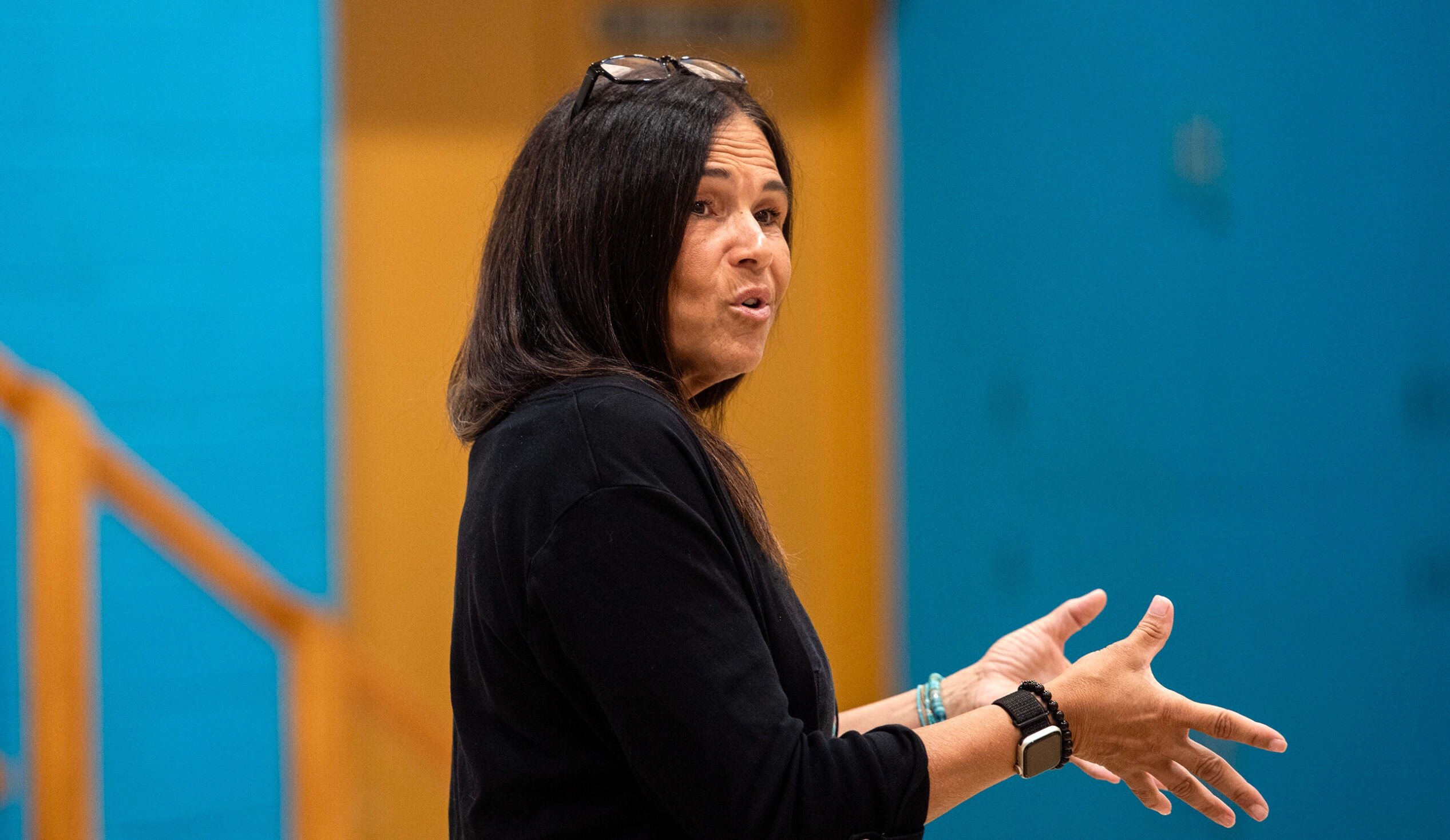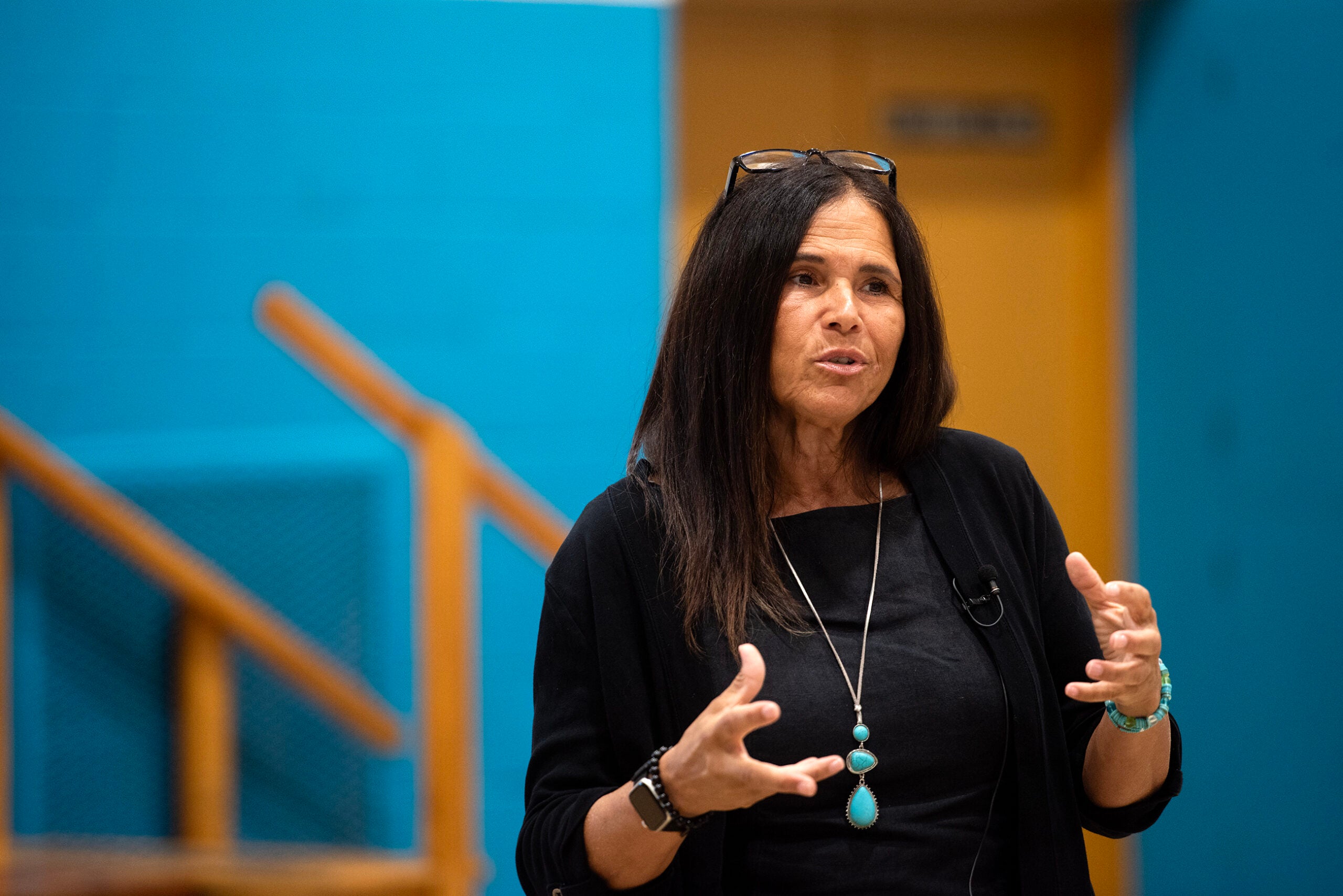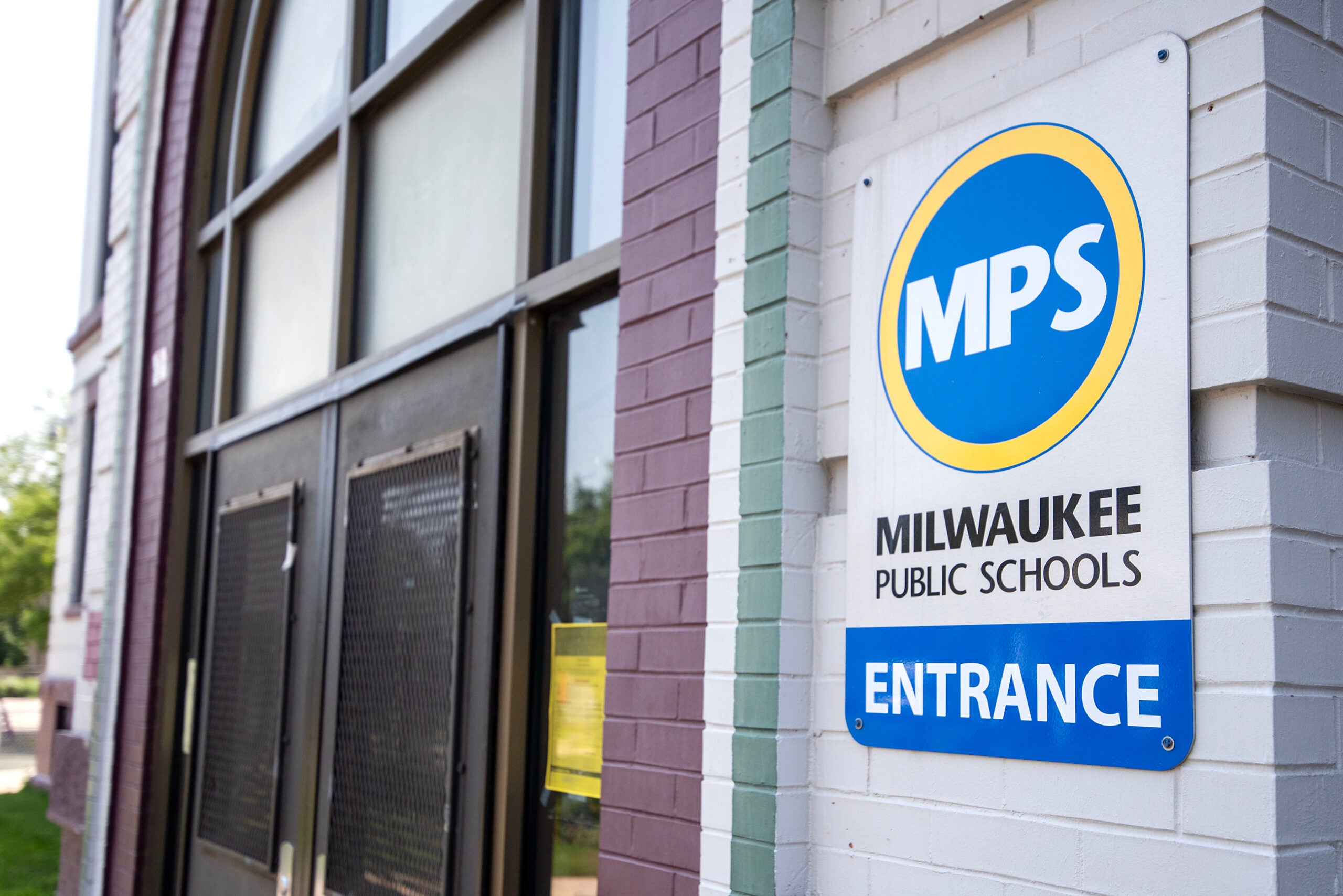Despite Milwaukee parents having multiple education options for their kids, there are only pockets of success stories across the city at both the public and private schools, according to a new report.
Black students in particular continue to perform at levels far below their peers in other urban cities, with students in Milwaukee’s public school system and private voucher programs struggling with pandemic recovery and longstanding disparities.
“No matter what data point we looked at — and we looked at a lot — we’re seeing that racial disparity show up over and over again,” said Sara Shaw, a deputy researcher with the Wisconsin Policy Forum and one of the lead authors of the report.
News with a little more humanity
WPR’s “Wisconsin Today” newsletter keeps you connected to the state you love without feeling overwhelmed. No paywall. No agenda. No corporate filter.
The comprehensive 57-page report released this week by the the Policy Forum looks at the students, financing and performance of Milwaukee’s public and private K-12 schools.
A second report is expected this fall that will look at success stories at schools in Milwaukee and across the country.
The report was funded, in part, by Northwestern Mutual, who paid for co-researcher Robert Rauh. Rauh is the former CEO of Milwaukee College Prep, a charter school in the city.
He is now strategic advisor for City Forward Collective. That group, and Northwestern Mutual were strong critics of the school district’s $252 million referendum, which narrowly passed in April.
While some variations in school performance exist between sectors and schools, the stark reality is that many Milwaukee students are not able to read or do math at close to grade level.
Wisconsin Policy Forum report
MPS enrollment continues to decline
The forum report also found the total number of school-age children in Milwaukee, and enrollment in MPS, has declined markedly over the last two decades, while enrollment in Milwaukee charter schools and private schools using vouchers through the Milwaukee Parental Choice Program has increased.
“This enrollment decline creates a number of different strains,” Shaw said. “When you lose kids, you lose funding. But it also puts a strain on facilities. We saw the number of schools and school buildings increasing over time, as the city’s youth population was increasing. But as youth enrollment declined, the number of buildings has not shifted very much, and that has to stretch available dollars.”
Milwaukee Public Schools operated 143 schools in 2023 with a total of 59,899 students. That represented about half of the students served in the city. From 2006 to 2024, enrollment in MPS plummeted by one third.
Meanwhile, charter school enrollments more than doubled during that same time period from 7,323 in 2006 to 15,695 in 2024.
Enrollment in Milwaukee’s private choice schools increased nearly 90 percent since 2006 from 15,864 to 30,103 last school year, according to the report.
Besides parents moving their children from public to private schools, there are fewer children being born.
Based on current birth data, by 2029, the number of first graders in Milwaukee is likely to be between 16 and 22 percent lower than it was in 2023, Shaw said.
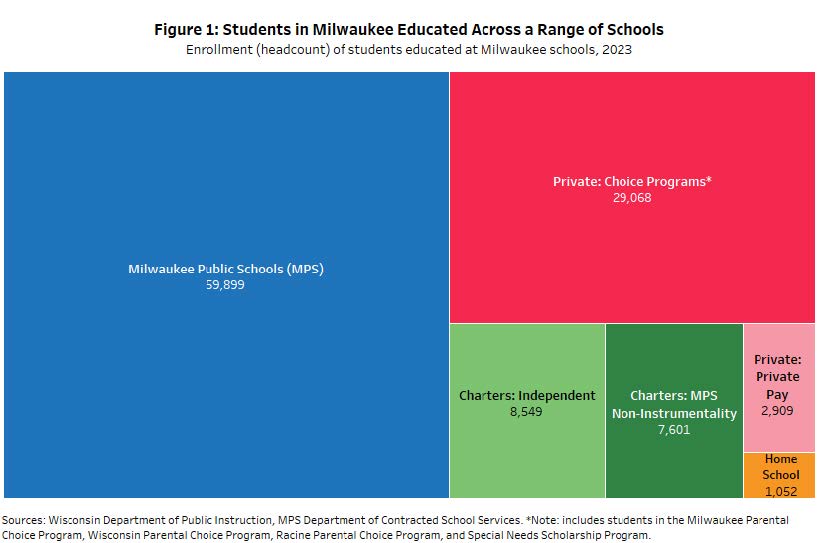
Black students least likely to attend highly-ranked schools
Milwaukee was seen as the center of education reform in the 1990s when the Milwaukee Parental Choice Program was created. It was the country’s first initiative to offer publicly funded tuition vouchers for students to attend private schools.
But more than 30 years later, the Policy Forum has found there is little evidence the average Milwaukee child receives a higher quality education today — especially low-income children of color.
“On basically every standardized measure, whether at the state or the national level, Milwaukee has historically and continues to really struggle to systemically educate kids well, particularly our black children,” Shaw said.
This knowledge should force people to ask what core issues are making it difficult for children to succeed in school and how we set standards for staff and students, Shaw said.
Quinton Klabon, senior research director with the right-leaning Institute for Reforming Government, said the Policy Forum report shows Milwaukee is an outlier, performing at the bottom of its national peers.
But Klabon said it should not be about pitting public schools against private schools.
“It’s parents deciding Milwaukee isn’t worth living in because they can’t find a high-performing school for their children, depopulating our city,” Klabon said. “To grow Milwaukee to a million, we must get serious about expanding the city’s best schools, copying what works in America’s outstanding urban classrooms, and spending money wisely. The greatest chapter in the Cream City’s history can still be written if anybody picks up the pen.”
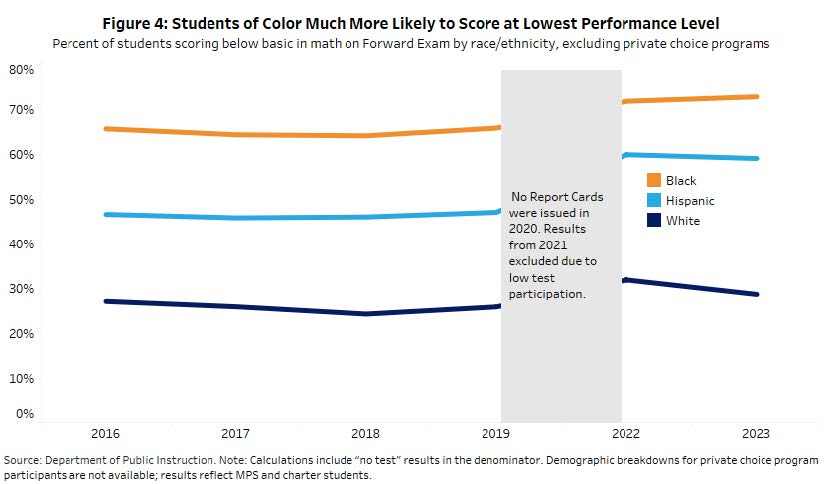
Nicole Armendariz, spokesperson for MPS, said the voucher school system was created with the promise that it would lift all students, but the report makes it clear it hasn’t.
“Milwaukee Public Schools provides education options for all students when other schools in the city do not. The Wisconsin Policy Forum’s report recognizes that supports for children with the highest needs, including special education students and English learners, is not sufficient, and falls almost entirely to the public school system,” Armendariz said.
Students identified with disabilities made up 20 percent of MPS’ enrollment in 2023, compared to 11 percent in the city’s charter schools, according to the report.
The Policy Forum was unable to get accurate data on the number of students with disabilities in private choice programs because that data was not submitted to the state.
MPS, charter schools and private choice programs in the city all served at least 90 percent students of color and over 75 percent economically disadvantaged students — some of the highest rates in the state, according to the report.
“As MPS continues to serve the most vulnerable students in Milwaukee, while also providing services to private schools, public school funding continues to erode,” Armendariz said. “It’s time to look outside the boundaries of the city of Milwaukee and to the state level to establish systems that will finally provide the support students need to thrive.”
Absenteeism in Milwaukee continues to be an issue
Chronic absenteeism has been an issue in school districts across the country since the pandemic.
While there is not data provided for the voucher schools, Milwaukee Public Schools and Milwaukee charter schools saw chronic absenteeism jump in 2021, went up even further in 2022, and then slightly declined in 2023.
About 37 percent of students in charter schools are chronically absent. At MPS, 51 percent of students are chronically absent. Nationally, the average is 32 percent in the poorest school districts.
A student is considered chronically absent when they attend less than 90 percent of school days.
Attendance is an important measure of student engagement and a predictor of future achievement, dropout or late graduation.
“So when we think about what’s even possible to do in schools, usually we start with our kids at least there to be able to benefit from whatever interventions we’re putting in place,” Shaw said. “And that prerequisite for inside school change really is not there right now.”





